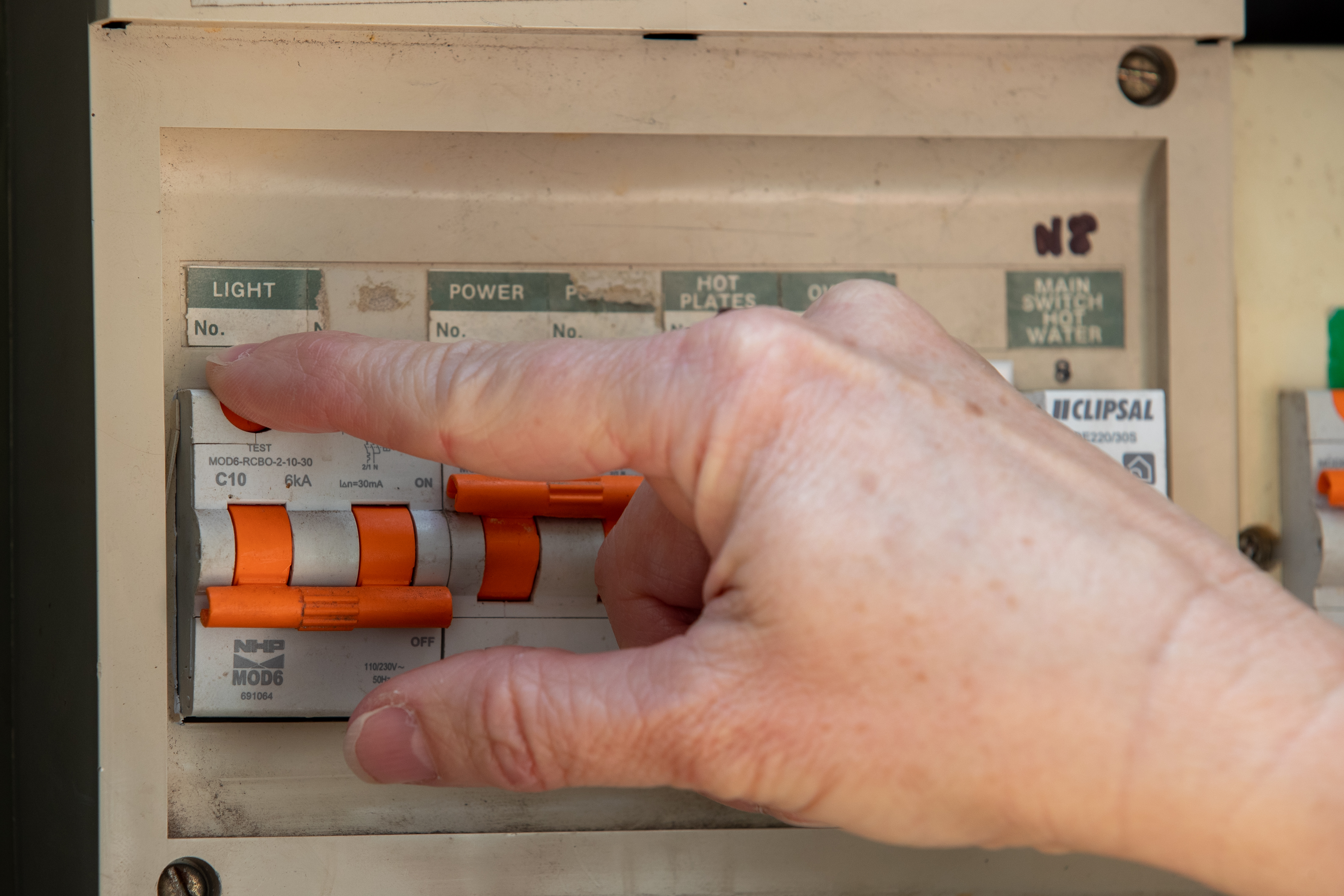40% of house fires in NSW each year are caused by electrical faults and electrical appliances. This means up to 1800 house fires each year could have been prevented by getting the wiring checked by a licensed electrician and having safety switches installed.
Usually, properties built during or after the year 2000 will have safety switches installed. For properties built before the year 2000, it’s strongly recommended that you ask a licensed electrician to check.
Test safety switches twice a year to make sure they’re working properly to prevent the deadly risks of electric shock and fire.
How safety switches protect your home
Safety switches protect you when an electrical fault is detected. They monitor the flow of electricity through a circuit. If there is a leakage of current, they turn off the electricity in a fraction of a second and protect you from serious electric shock.
Also known as Residual Current Devices (RCDs), safety switches also protect against the most common cause of deadly electric shock – where electricity passes through the body to earth.

One safety switch may not be enough to protect your household from electric shock or fire. A safety switch only protects you if it’s on that circuit. Each circuit should have its own safety switch, for example, one safety switch for your lights and a separate one for your electrical appliances. Older houses and apartments may only have a single safety switch protecting several circuits.
Check with a licensed electrician to make sure you have the right number of switches to prevent the risk of electric shock or electrical fires that may cause injury or death. Safety switches look slightly different on each switchboard but always have a ‘T’ or ‘Test’ button.
If your home isn’t covered by safety switches or you are unsure if you have them installed, contact a licensed electrician for help. A simple installation can cost a few hundred dollars but can vary depending on the work that’s needed, specific to your home. A licensed electrician can tell you more.
Make sure that the electrician has a current licence and is the same person as the licence holder who comes to do the work at your home. Following any electrical work, your electrician will need to provide you with a uniquely numbered Certificate of Compliance Electrical Work.
Checking your safety switch every six months
Like smoke alarms, safety switches need to be tested to make sure they are working properly. Set aside some time today to do a check. It takes a few minutes to follow these simple steps and it could save a life:
- Let everyone in your home know you’re about to test safety switches.
- Press the ‘T’ or ‘Test’ buttons on each safety switch. The power will be cut and switch to the ‘off’ position. This must occur without undue delay. You may hear a clunking sound.
- Check inside the home – there should be no power to lights, appliances and power switches on the circuit(s) you’re testing.
- Once you’re confident that the power is off, reset your safety switches by lifting or turning the switch back to the on position. Hint: Some switches will need to be pressed right down to the ‘off’ position before you can flick them back on.
- If lights or appliances don’t lose power then your safety switches may have failed. Contact a licensed electrician as soon as possible to investigate.
- If your safety switch doesn’t reset, contact a licensed electrician to replace it.
- Put a reminder in your calendar to test your safety switches again in 6 months (eg. when you change your clocks for Daylight Savings).
Tenants can ask their agent/landlord if there are safety switches, where they are located and permission to test them.